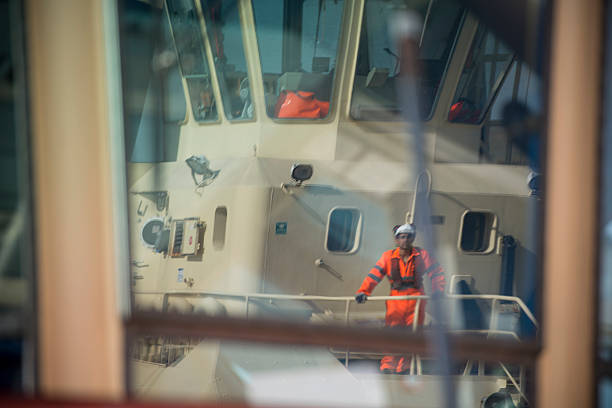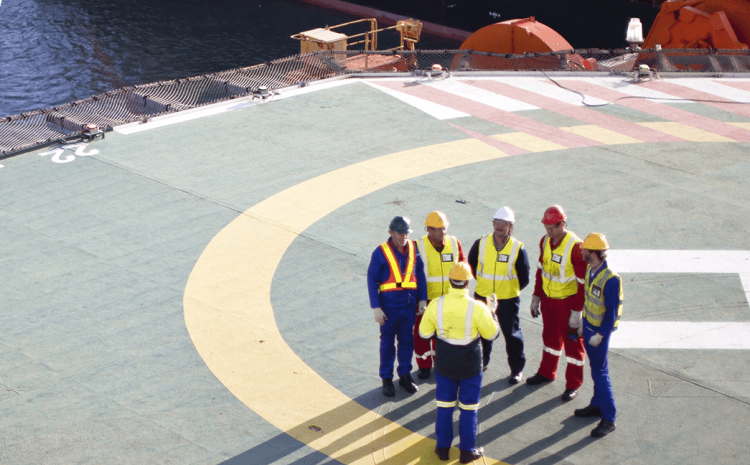Safety: Shipping’s Greatest Risk Today, Tomorrow and into the Future
By Dr Grahaeme Henderson OBE
Why is safety the single most important subject for every shipping company? Why should safety be the top agenda item for every company’s CEO and Leadership Team?
Among the ever-increasing list of items on the busy agenda of shipping businesses, the one that presents the greatest risk is safety; today, tomorrow and into the future. While other subjects currently take centre stage as priorities in the shipping media, safety is fundamental to each of these areas too, whether we are talking about decarbonisation, technology and world events.
The reason is that safety is central to everything that we do, both at work and in our own daily lives. This is because it is about people; our families and children, but also our seafarers who also have families and children. Our employees are the lifeblood of our companies, and we must put them at the very heart of shipping.
Shipping remains one of the world’s most hazardous industries. Protecting the lives of seafarers requires stronger cooperation, and a sustained programme that is focused on leadership, showing care for the wellbeing of seafarers, and preventing major incidents from happening.
Getting our safety programmes right is imperative today and vital for the future success of any shipping company. Safety enables the sustainability of the shipping industry into the future, attracts high-quality talent, and is imperative for improving business performance.
Safety allows us to develop a mindset of learning from each other, and enables teams to collaborate, generate fresh ideas, and deliver solutions to a myriad of challenges.
However, despite its importance, safety appears to have moved down the agenda in the shipping industry. This is of major concern and the impact is clear. Data shows us that the overall number of incidents and fatalities has stagnated in recent years and at a high level. Shipping remains one of the world’s most hazardous industries.
The Safety & Shipping Review 2022 from Allianz Global Corporate & Specialty (AGCS) revealed there were 3,000 reported shipping casualties or incidents last year, which is an increase of over 10% when compared to 2020. Data on the major incidents that feature in media reports each day also point to an increase in all shipping sectors. With P&I insurance premiums also increasing, there is little doubt that safety is the most important issue in shipping.
Many of the major incidents are preventable. The State of Maritime Safety 2020 report by IHS Markit concluded “multiple risks can be tackled with a focus on crew training and emergency responses, and investment in technology for tracking and monitoring vessels”. With container-carrying capacity almost doubled over the last decade and crew shortages worsened by the current geopolitical conflict, there are even higher risks for ships and the seafarers who operate them.
If there is an incident, it will cost a company dearly, in terms of both the direct and indirect costs. Insurance may cover some of the costs, but the company will incur the cost of delays while investigations take place, loss of revenue, compensation costs, management time, and more.
There are also indirect costs, such as the negative impact of publicity for the company, how the employees feel and react, and the personal reputation of the CEO and its Leadership Team.
From another perspective, it has been proven that companies with a great safety performance record also have great business performance. It is also recognised that the traits of a great safety leader are the same as for a great business leader. That is because both require leaders who have the vision to develop and deploy an effective strategy, and take accountability to deliver results. Leaders that have empathy, and can empower and inspire employees. Leaders that ask questions and listen, and value the contribution from others.
With a strong focus on safety, the management and the entire organisation can focus on the positive aspects of preventing incidents, with the added advantage of a strong commercial performance.
It energises and motivates staff to perform well and increases trust from the Boardroom right through to the seafarer on the ship. It builds a strong reputation for the company and employees, while encouraging a positive approach to everyday working. Simply put, good safety is good business.
So, with the many challenges, how do we make the necessary changes to put safety as the very top agenda item for all involved? Shipping has many important and influential industry groups, many ship owners and managers, and many related supporting businesses. But what has become clear when speaking to those groups about safety, is that something else needs to be done. Something that will bring all the various groups together, that will unite the shipping industry around safety and that does not result in more regulation, but will draw on the collective expertise of the industry.
From these beginnings, the Together in Safety coalition was formed three years ago. and comprises all of the shipping industry groups, including the International Chamber of Shipping, BIMCO, OCIMF, Intertanko, Intercargo, Interferry, Cruise Liners International, and the World Shipping Council. It also includes many major shipping companies, insurance, classification societies, and country representatives.
Links have also been established with the International Air Transport Association (IATA) and the Rail Standards and Safety Board (RSSB), so that important safety lessons can be learnt from the air and rail industries.
The Together in Safety coalition’s core objective is to protect seafarers’ lives, while delivering improved business efficiency and commercial effectiveness, and is fundamental to safeguarding shipping’s future success.
A key building block is the ‘Framework of Strategic Drivers’, which underlines how Together in Safety members are tackling safety issues. Shipping companies should become familiar with the framework and test for alignment with their existing programme, making adjustments as required. There are three key Strategic Drivers.
The first Strategic Driver is Leadership. Visible safety leadership must stem from the top down, with the right behaviours and mindset modelled by the CEO and the Leadership Team. Starting every conversation with safety, visiting people on the front line, leading the programme and reviewing progress, and taking corrective action where required. Together in Safety includes modules and guidelines that will help improve leadership through developing a vision and plan, leading by example, and improving engagement and collaboration. Very importantly, it also requires verification that what you think is happening is actually happening in practice. So often when a major incident occurs, the procedures have been found to be in place, but the application is lacking.
The second Strategic Driver is Incident Prevention. Together in Safety has undertaken a detailed analysis of major shipping incidents during the past years across all shipping sectors. The conclusion is that they are always the same types of incident, such as collisions, groundings, ships on fire, lost containers, people falling overboard. It is important to state these are not accidents. Instead, they are repeatable events that could and should have been avoided. They result in the unnecessary loss of seafarers’ lives, unnecessary pollution and unnecessary expenditure.
Together in Safety is focussing on 14 categories of major incident types, involving casualties or high-cost insurance claims. For each incident type, a set of ‘Golden Safety Rules’ have been outlined, including guidelines and best practices, training and engagement tools, and checklists of areas that have highlighted major issues.
The third area is Wellbeing and Care. Ensuring the wellbeing and showing care is key to developing a healthy, happy and high-performing team. The Together in Safety initiative includes recommendations to deliver a high-quality wellbeing and care programme, and improve seafarer mental-health related aspects.
A key aspect of Together in Safety is that companies can move quickly to delivery. There is no need to spend time and incur the high costs in preparing materials, with the many proven best practices free to use to deliver a sustained improved safety and business performance.
The coalition is strongly focussed on collaborative working on current challenges by the entire industry, using its combined collective knowledge and expertise for the benefit of all. Such collaboration will simplify and standardise data collection, where it is recognised there is a lack of full reporting of reliable and accurate data concerning fatalities, suicides and injuries involving seafarers. There is also collaboration on the safety of future fuels where a group has been assessing the operational risks and the resulting competence requirements for safe handling.
The major focus is on stopping major incidents from happening, where people are killed or there is major damage and pollution.
With safety incidents increasing in number, there is an opportunity to reverse this trend by every shipping company being a role model in adopting the Together in Safety programme.
We owe this to our seafarers who work for us, as they entrust their safety in us and we need to look after them as if they were our family and our children. We must be clear that the decisions that we make each day are crucial as to whether those seafarers arrive home safely, or not.
Visit www.togetherinsafety.info for further details.
This article appeared in Maritime Risk International on 29 June 2022

